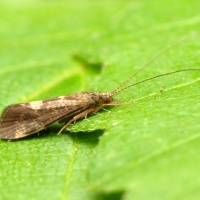Human impacts on stream ecosystems can amplify the effects of the climate crisis

The effects of multiple human impacts on streams can increase concentrations of greenhouse gases in their waters, potentially exacerbating the harmful effects of the climate crisis, new research suggests.
The study, led by the University Rey Juan Carlos-URJC and CBMA – University of Minho, found that streams exposed to multiple human impacts can contain double the concentrations of carbon dioxide and methane: the two most important greenhouse gases. The research team – which also included scientists from the University of Barcelona and Centre for Research on Ecology and Forestry Applications-CREAF – assessed how the concentration of these greenhouse gases responded to the combined impacts of nutrients, warming and low oxygen concentrations by conducting fieldwork in 50 streams across northern Portugal.
“Even though streams naturally have higher concentrations of carbon dioxide and methane compared to the atmosphere, this study demonstrates for the first time that the accumulation of multiple impacts exacerbates the concentrations of these gases and potentially their emissions into the atmosphere,” says Cayetano Gutiérrez-Cánovas, the lead author of the study and researcher at URJC. “Given that many rivers are already subject to several human impacts, there’s a considerable risk that the environmental degradation they cause could further exacerbate the climate crisis,” Gutiérrez-Cánovas continues.
Writing in Global Change Biology, the researchers also evaluated the role of the scale at which these human impacts take place to gain a deeper understanding of the mechanisms that control greenhouse gas productions in streams. “Our findings indicate that the scale at which human impacts occur has varying effects on carbon dioxide and methane concentrations,” explains Daniel von Schiller, co-author of the study and associate professor at UB. “Carbon dioxide, being more soluble than methane and capable of traveling long distances through stream waters, appears to be influenced by impacts occurring throughout the catchment. However, our models suggest that methane, which can readily escape from water and enter the atmosphere, is responsive to both local and catchment-scale impacts.”
This research carries significant implications for river management. Current restoration and mitigation strategies often concentrate on local actions, overlooking broader catchment-scale impacts and their potential contributions to climatic stability. For example, one of the main concerns for river managers is reducing nutrient inputs to freshwaters, which can have dramatic ecological consequences, as shown by the situation in the Mar Menor lagoon in southeast Iberia.
“Our findings suggest that reducing nutrient inputs and addressing low oxygen conditions could provide additional co-benefits which aid in the fight against climate change,” says Cláudia Pascoal, senior author of the study and associate professor at CBMA-UMinho. “These results underscore the importance of managing rivers with a holistic, catchment-scale approach, not only to preserve biodiversity and benefits for people but also to mitigate the climate crisis.”
///















Comments are closed.